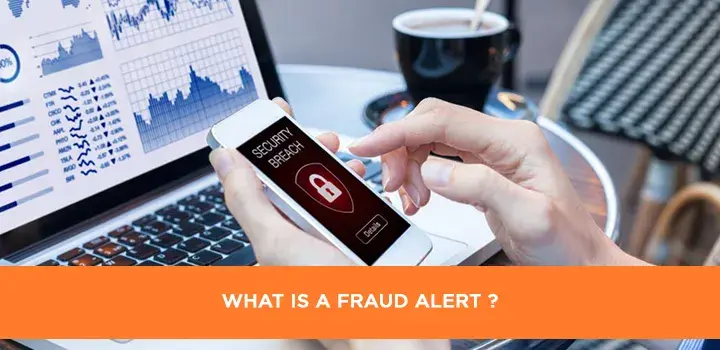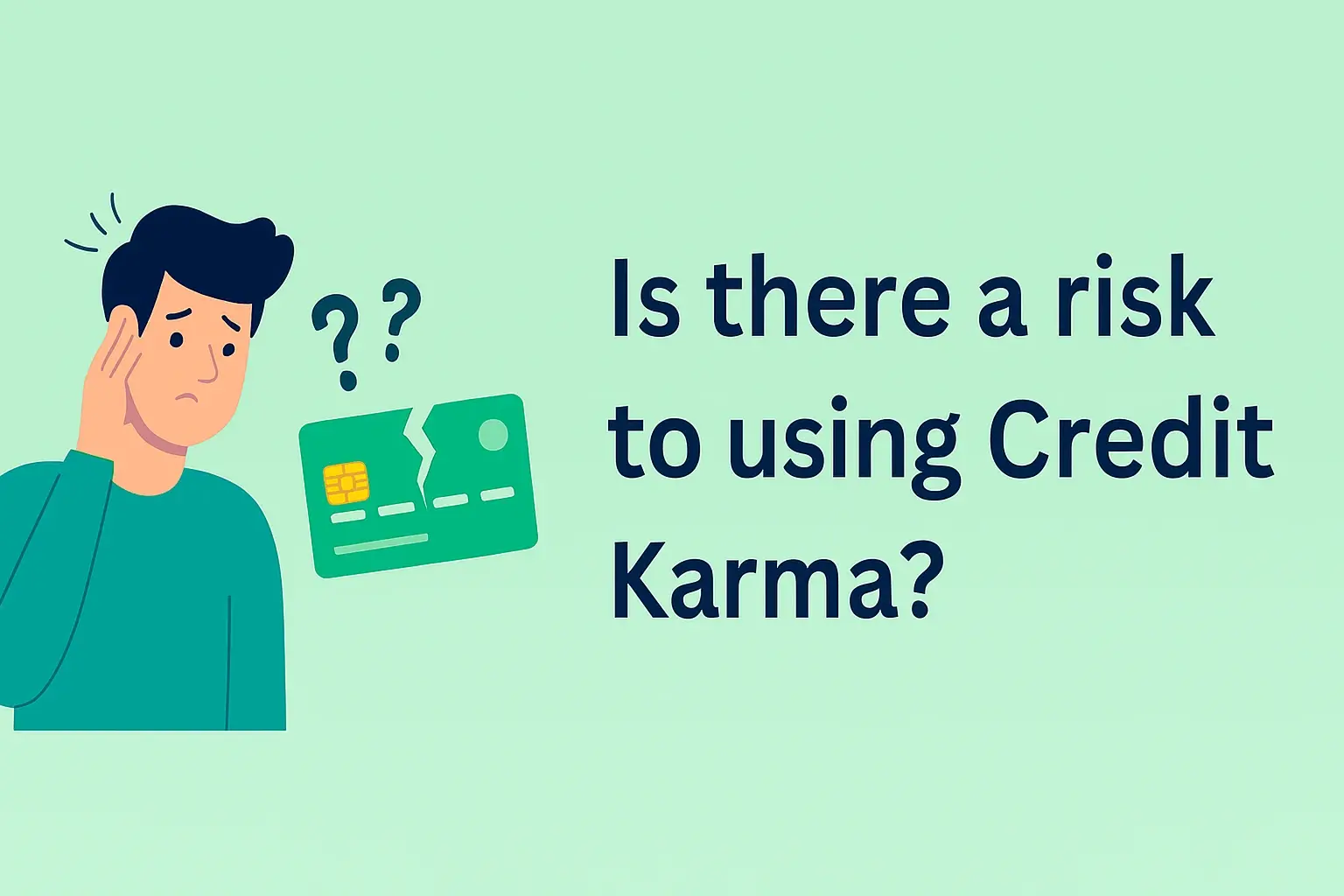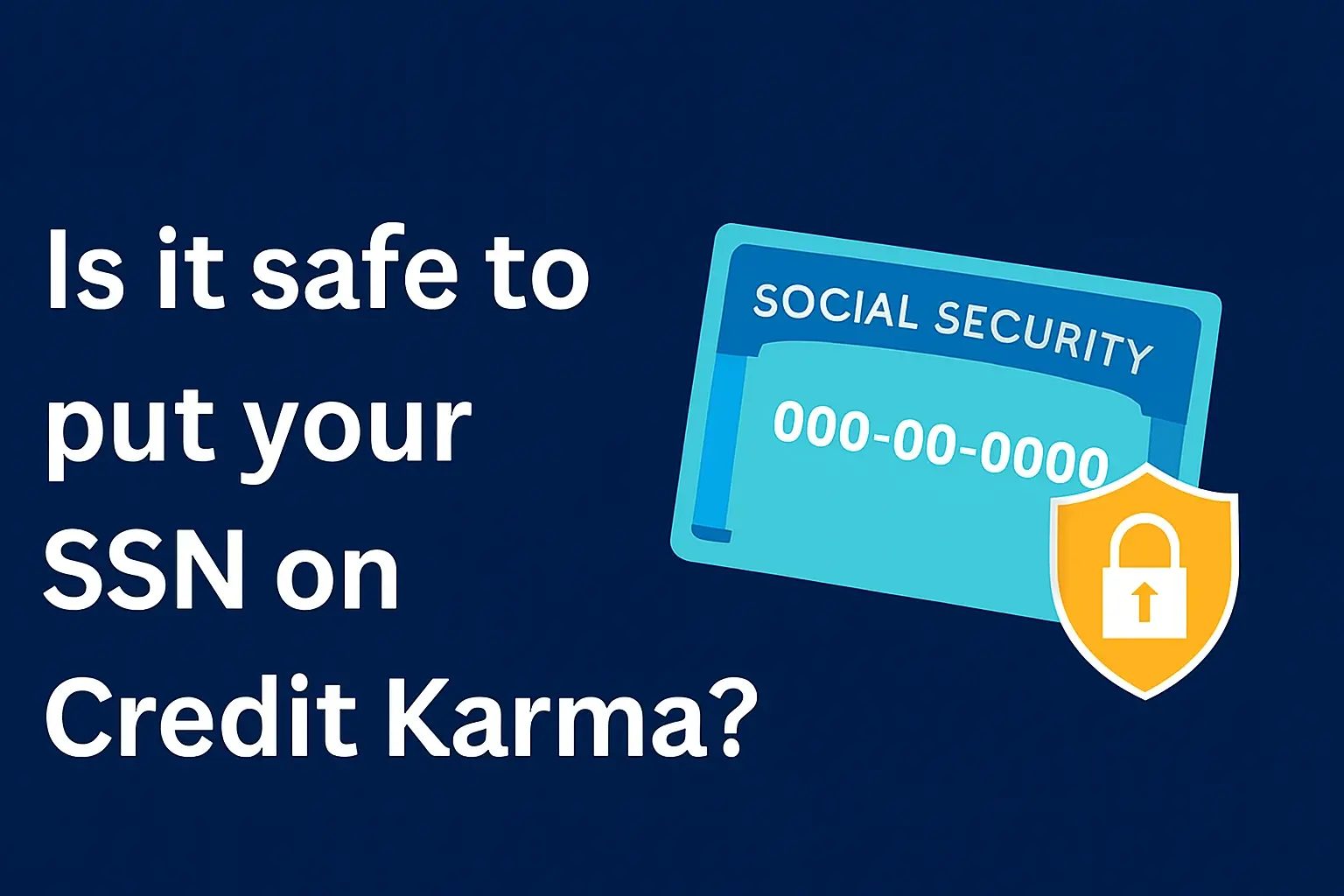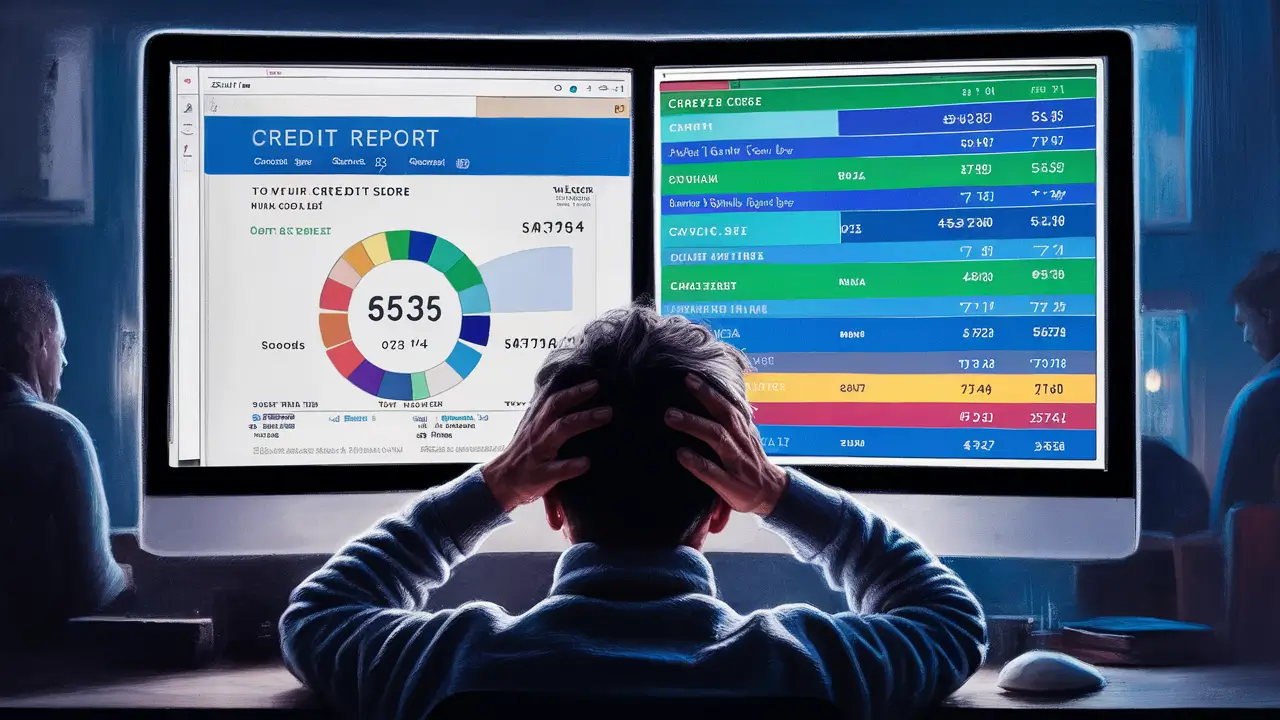-
Posted on: 21 Dec 2022

-
A fraud alert is a security measure placed on your credit report that warns lenders and creditors to take extra steps to verify your identity before opening new accounts in your name. It's a crucial tool for protecting yourself against identity theft, offering a proactive layer of defense against unauthorized credit applications.
What Exactly Is a Fraud Alert?
In the digital age, safeguarding personal information is paramount. Identity theft remains a persistent threat, with millions of individuals falling victim each year. When your sensitive data, such as your Social Security number, date of birth, or address, falls into the wrong hands, criminals can exploit it to open fraudulent accounts, rack up debt, and wreak havoc on your financial life. A fraud alert is a vital security measure designed to act as an early warning system against such malicious activities. It's a signal to potential creditors that they should exercise extra caution and perform additional verification steps before approving any new credit in your name. Essentially, it's a proactive step you can take to make it harder for identity thieves to impersonate you and open accounts using your stolen information.
The primary purpose of a fraud alert is to deter new account fraud. When a lender receives an application for credit (like a credit card, loan, or mortgage) in your name, they typically check your credit report. If a fraud alert is in place, the lender is alerted to this potential risk. They are then required by law to take reasonable steps to verify your identity before extending credit. This might involve calling you directly at a phone number listed on your credit report, asking specific questions about your personal information, or requesting additional documentation. This extra layer of scrutiny can significantly slow down or even stop an identity thief in their tracks, preventing them from opening accounts that would otherwise appear on your credit history.
It's important to understand that a fraud alert is not a credit freeze. While both are security measures, they operate differently. A fraud alert primarily impacts new credit applications, while a credit freeze restricts access to your entire credit report, making it difficult for anyone, including yourself, to open new credit. Fraud alerts are generally considered less restrictive than freezes, allowing for easier access to credit when you genuinely need it, while still providing a robust defense against identity theft.
The implementation of fraud alerts is governed by the Fair Credit Reporting Act (FCRA), a federal law that provides consumers with rights regarding their credit reports. The FCRA mandates that credit bureaus must honor fraud alerts and that businesses extending credit must verify the identity of applicants when an alert is present. This legal framework ensures that fraud alerts are a recognized and effective tool in the fight against identity theft.
Understanding the Different Types of Fraud Alerts
When you decide to place a fraud alert on your credit, you'll encounter two primary types: the initial fraud alert and the extended fraud alert. Each serves a distinct purpose and is suited for different circumstances. Understanding these differences is key to leveraging them effectively for your personal security.
Initial Fraud Alert
An initial fraud alert, also known as a temporary fraud alert, is designed for individuals who suspect they may be a victim of identity theft or have had their personal information compromised. This could be due to losing a wallet, having a computer hacked, or receiving suspicious notifications about your accounts. When you place an initial fraud alert, it remains on your credit report for one year. During this period, any business that requests your credit report for the purpose of extending credit must take reasonable steps to verify your identity. This typically involves contacting you directly using the phone number you provided when placing the alert.
The process of placing an initial fraud alert is straightforward. You only need to contact one of the three major credit bureaus (Equifax, Experian, or TransUnion). Once you notify one bureau, that bureau is legally obligated to inform the other two. This ensures that the alert is placed across all your credit reports, providing comprehensive protection. When you place an initial fraud alert, you will also receive a confirmation letter from the credit bureau, which includes a unique personal identification number (PIN). This PIN is crucial for managing your alert and for accessing your credit reports.
The benefit of an initial fraud alert is its accessibility and its ability to provide immediate, albeit temporary, protection. It's a good first step for anyone concerned about a recent data breach or a potential compromise of their personal information. It doesn't prevent you from accessing your own credit or from applying for new credit, but it adds a critical verification step for potential creditors.
Extended Fraud Alert
An extended fraud alert is a more robust measure, typically placed when you have been an actual victim of identity theft. If you have filed a police report for identity theft or have been confirmed as a victim by a court order, you are eligible for an extended fraud alert. This type of alert remains on your credit report for seven years. Similar to the initial alert, it requires creditors to verify your identity before extending new credit. However, the extended nature of this alert provides a longer-term safeguard for victims who are actively working to repair their credit and protect themselves from further fraudulent activity.
To place an extended fraud alert, you will need to provide proof of identity theft to one of the credit bureaus. This usually involves submitting a copy of a police report or a court order. Once again, the credit bureau you contact will notify the other two. The extended fraud alert also comes with the right to obtain two free credit reports from each of the three credit bureaus per year for seven years, allowing you to monitor your credit for any suspicious activity. This enhanced monitoring capability is invaluable for identity theft victims.
The extended fraud alert is a powerful tool for those who have suffered the significant consequences of identity theft. It offers peace of mind and a strong layer of protection as they navigate the complex process of recovering their financial identity. It's a testament to the fact that the law recognizes the severity of identity theft and provides mechanisms for victims to protect themselves.
How Do Fraud Alerts Actually Work?
The mechanism behind a fraud alert is designed to create a hurdle for potential identity thieves attempting to open new lines of credit in your name. When a fraud alert is active on your credit report, it signals to lenders and creditors that extra vigilance is required. Here's a breakdown of the process:
The Lender's Perspective
When you apply for credit—be it a credit card, a loan, or even some utility services—the lender will typically pull your credit report from one or more of the major credit bureaus. If a fraud alert is present on your report, it will be flagged during this process. The FCRA mandates that lenders must take reasonable steps to verify your identity before approving the application. This verification process can vary by lender but generally involves one or more of the following actions:
- Contacting You Directly: The most common step is for the lender to contact you using the phone number you provided when you placed the fraud alert. They will ask you to confirm details about the credit application. If they cannot reach you, or if you deny applying for the credit, they are typically required to deny the application.
- Asking Specific Questions: Lenders may ask you questions about your personal financial history that are not readily available on your credit report. These are often referred to as " அமில" (acid) questions, designed to be known only by the true account holder.
- Requiring Additional Documentation: In some cases, especially with an extended fraud alert, lenders might request additional forms of identification or documentation to confirm your identity.
The goal of these steps is to ensure that the person applying for credit is indeed you, and not an imposter using your stolen information. This process is intended to be a deterrent, as it adds time and complexity to the application process for a fraudster.
The Role of Credit Bureaus
When you place a fraud alert with one of the three major credit bureaus (Equifax, Experian, or TransUnion), that bureau is required to notify the other two. This ensures that the alert is applied to all three of your credit reports. The credit bureaus maintain your credit history and provide this information to lenders. The fraud alert acts as a flag within their system, visible to any entity accessing your credit file for credit-granting purposes.
It's crucial to remember that fraud alerts primarily affect *new* credit applications. They do not prevent existing creditors from contacting you about your current accounts, nor do they stop legitimate credit checks for other purposes, such as employment screening or insurance underwriting, although some of these entities may still choose to verify your identity. However, for any application seeking to establish new credit, the alert triggers the verification process.
Impact on Your Credit Score
Placing a fraud alert does not directly impact your credit score. Your credit score is calculated based on your credit history, payment behavior, credit utilization, and other financial factors. A fraud alert is a security measure, not a reflection of your creditworthiness. Therefore, you don't need to worry about it negatively affecting your ability to obtain credit in the future, other than the added verification step for new applications.
Who Should Consider Placing a Fraud Alert?
While a fraud alert is a powerful tool for anyone concerned about identity theft, certain situations and individuals benefit most from its protection. Proactive measures can save significant time, money, and stress down the line. Consider placing a fraud alert if you fall into any of the following categories:
Individuals Who Have Been Victims of Identity Theft
This is the most critical group. If you know or suspect that your personal information has been compromised and used for fraudulent purposes, an extended fraud alert is highly recommended. This includes situations where:
- You have received notifications from companies about suspicious activity on your accounts.
- You discover unauthorized accounts or charges on your credit reports.
- You have filed a police report for identity theft.
- You have been contacted by debt collectors for debts you did not incur.
For these individuals, an extended fraud alert provides a robust, seven-year shield against further exploitation. It’s a necessary step in the recovery process.
Individuals Who Have Lost or Had Their Wallet or Purse Stolen
The immediate aftermath of losing your wallet or purse is a high-risk period. These items often contain not only credit cards but also your driver's license, Social Security card, and other sensitive identification. A thief with these items can easily attempt to open new accounts. Placing an initial fraud alert immediately after such an incident can help prevent fraudulent activity before it occurs. You should also take steps to cancel your lost cards and consider reporting your driver's license lost or stolen to your state's DMV.
Individuals Who Have Experienced a Data Breach
Many companies, from major retailers to healthcare providers, experience data breaches. If a company you do business with announces a data breach that may have exposed your personal information (like your Social Security number, date of birth, or financial account details), it's wise to place an initial fraud alert. Even if the breach appears minor, there's no guarantee that criminals won't exploit the stolen data over time. An alert provides an extra layer of protection against potential future misuse.
Individuals Concerned About Online Security
In an era of increasing online threats, phishing scams, and malware, it's prudent for anyone who uses the internet for financial transactions or stores personal information online to consider a fraud alert. While it's not a substitute for good online security practices (like strong passwords and avoiding suspicious links), it adds a critical safety net. If your information is inadvertently shared or accessed through an online compromise, the fraud alert can mitigate the damage.
Individuals Planning to Apply for Credit Soon
If you are planning to apply for a mortgage, car loan, or significant credit line in the near future, and you have any concerns about the security of your personal information, placing an initial fraud alert can be a good precautionary measure. It won't hinder your legitimate applications, but it will add a layer of protection if your information has been compromised without your knowledge.
Anyone Seeking Enhanced Security
Ultimately, a fraud alert is a free and accessible tool that offers enhanced security for your financial identity. For individuals who value peace of mind and want to take proactive steps to protect themselves from the potentially devastating consequences of identity theft, placing an initial fraud alert is a sensible decision. It's a small effort that can yield significant protection.
Placing a Fraud Alert: A Step-by-Step Guide
Placing a fraud alert on your credit report is a relatively simple process designed to be accessible to all consumers. The key is to remember that you only need to contact one of the three major credit bureaus, and they will then notify the other two. Here’s how to do it:
Step 1: Determine the Type of Alert You Need
As discussed earlier, decide whether you need an initial fraud alert (for suspected compromise or data breaches) or an extended fraud alert (if you are an actual victim of identity theft and have documentation like a police report). The requirements and duration differ.
Step 2: Gather Necessary Information
Before you contact a credit bureau, have the following information ready. This will expedite the process and ensure accuracy:
- Your full legal name
- Your current address (and previous addresses if you've moved recently)
- Your Social Security number (SSN)
- Your date of birth
- A daytime telephone number where you can be reached
- For an extended fraud alert, you will need documentation proving identity theft (e.g., a copy of a police report, FTC identity theft affidavit, or court order).
Step 3: Contact One of the Three Major Credit Bureaus
You can initiate the fraud alert process online, by phone, or by mail. Online and phone are generally the quickest methods.
- Equifax:
- Website: Equifax.com
- Phone: 1-800-525-6285
- Experian:
- Website: Experian.com
- Phone: 1-888-397-3742
- TransUnion:
- Website: TransUnion.com
- Phone: 1-800-680-7289
Important Note: When you contact one bureau, they are required by law to notify the other two. You do not need to contact each bureau separately for the initial placement of the alert.
Step 4: Follow the Bureau's Instructions
Once you contact a bureau, you will be guided through their specific process. This will likely involve answering security questions and providing the information you gathered in Step 2. If you are placing an extended fraud alert, you will be instructed on how to submit your supporting documentation.
Step 5: Receive Confirmation and Your PIN
After successfully placing the fraud alert, the credit bureau will send you a confirmation letter. This letter will typically include a unique Personal Identification Number (PIN). This PIN is extremely important. You will need it if you ever wish to:
- Renew the fraud alert (if it's an initial alert expiring).
- Remove the fraud alert.
- Place a credit freeze.
- Access your credit reports.
Keep this PIN in a safe and secure place. Losing it can make managing your credit report and alerts more complicated.
Step 6: Monitor Your Credit Reports
Even with a fraud alert in place, it's crucial to regularly monitor your credit reports. You are entitled to one free credit report from each of the three major credit bureaus every 12 months. You can obtain these at AnnualCreditReport.com. For victims of identity theft with an extended fraud alert, you are entitled to two free reports per bureau per year. Review these reports carefully for any unfamiliar accounts, inquiries, or personal information.
Fraud Alerts vs. Credit Freezes: Key Differences
While both fraud alerts and credit freezes are valuable tools for protecting your identity, they serve different purposes and have distinct implications for accessing credit. Understanding these differences is crucial for choosing the right protection for your needs.
Feature Fraud Alert Credit Freeze (Security Freeze) Primary Purpose Warns lenders about potential identity theft, requiring extra verification for *new* credit applications. Restricts access to your entire credit report, preventing *all* new credit applications (including by you) without temporary unfreezing. Duration Initial: 1 year. Extended: 7 years (for identity theft victims). Indefinite, until you choose to remove it. Impact on New Credit Lenders must verify identity; may delay application process. Does not automatically block applications. Blocks all new credit applications unless temporarily lifted. Impact on Existing Credit No impact. Existing creditors can still access your report for account management. No impact. Existing creditors can still access your report for account management. Impact on Your Own Credit Access Minimal. You can still apply for credit; lenders will verify your identity. Significant. You must temporarily lift the freeze to apply for new credit, rent an apartment, or even some job applications. Ease of Use Relatively easy to place and manage. No PIN required to apply for credit. Requires a PIN to place, lift, and re-freeze. Can be cumbersome if you frequently apply for credit. Cost Free. Generally free, though some states may have fees for lifting or re-freezing. Who Benefits Most Individuals who suspect compromise, experienced data breaches, lost wallets, or want an added layer of security without significant disruption. Individuals who have been victims of identity theft and want the strongest possible barrier against new fraudulent accounts, or those who rarely apply for credit. Verification Requirement Lenders verify identity. You must unfreeze your credit, then lenders can access it. When to Choose a Fraud Alert:
- You've lost your wallet or purse.
- You've been notified of a data breach.
- You've seen suspicious activity on your accounts but aren't sure if it's identity theft.
- You want an added layer of security without the hassle of unfreezing your credit every time you need to apply for new credit.
When to Choose a Credit Freeze:
- You have been an actual victim of identity theft and want the strongest possible protection.
- You are not planning to apply for any new credit in the foreseeable future.
- You are willing to manage the process of temporarily lifting the freeze when necessary.
Many experts recommend placing a credit freeze if you are a victim of identity theft, as it provides the most comprehensive protection. However, for many others, a fraud alert offers a good balance of security and convenience. Some individuals even choose to implement both, although the benefits of a fraud alert may be diminished when a freeze is in place.
The Advantages of Implementing a Fraud Alert
Placing a fraud alert on your credit report offers several significant advantages, primarily centered around preventing identity theft and providing peace of mind. These benefits make it a worthwhile consideration for many consumers:
1. Proactive Defense Against New Account Fraud
The most substantial benefit is the deterrence of new account fraud. By flagging your credit report, the alert prompts lenders to take extra steps to verify your identity. This makes it much harder for an identity thief to open credit cards, loans, or other financial accounts in your name. It acts as a critical first line of defense.
2. Free and Accessible
Unlike some other security services, placing a fraud alert is completely free. The Fair Credit Reporting Act mandates that credit bureaus offer this service at no cost to consumers. This accessibility makes it a practical security measure for everyone, regardless of their financial situation.
3. Easy to Implement and Manage
The process of placing a fraud alert is straightforward. You only need to contact one of the three major credit bureaus, and they will notify the others. While you need to keep track of your PIN for future management, the initial placement is quick and can often be done online or over the phone.
4. Minimal Disruption to Your Own Credit Access
Compared to a credit freeze, a fraud alert causes far less disruption to your ability to access credit. When you need to apply for new credit, lenders will simply perform additional verification steps. This means you don't have to go through the process of unfreezing and re-freezing your credit, which can be time-consuming.
5. Enhanced Monitoring Opportunities
When you place an extended fraud alert, you gain the right to receive two free credit reports from each of the three credit bureaus annually. This allows for more frequent and thorough monitoring of your credit reports, helping you to quickly identify any suspicious activity.
6. Legal Protection and Recourse
The FCRA provides a legal framework for fraud alerts. Lenders are required to comply with the verification process. If a lender fails to do so and you become a victim of fraud as a result, you may have legal recourse.
7. Peace of Mind
Knowing that you have taken a proactive step to protect your identity can provide significant peace of mind. In today's world, where data breaches are common, this sense of security is invaluable.
8. Useful for Specific Situations
Fraud alerts are particularly beneficial after events like a lost wallet, a data breach notification, or when you're concerned about potential misuse of your information. They offer targeted protection for these high-risk scenarios.
While not a foolproof solution against all forms of identity theft, a fraud alert is a highly effective and accessible tool that significantly enhances your personal financial security.
Understanding the Limitations of Fraud Alerts
While fraud alerts are a powerful tool in the fight against identity theft, it's crucial to understand their limitations. They are not a perfect solution and do not cover all scenarios. Being aware of these limitations will help you implement them effectively and maintain a comprehensive security strategy.
1. Primarily Affects New Credit Applications
The most significant limitation is that fraud alerts primarily impact applications for *new* credit. They do not necessarily prevent:
- Existing Account Fraud: If an identity thief already has access to one of your existing accounts (e.g., a credit card number), they can still use that account. The fraud alert doesn't prevent transactions on accounts that are already established.
- Other Forms of Identity Theft: Fraud alerts do not prevent identity theft used for purposes other than opening new credit, such as filing fraudulent tax returns, obtaining medical services, or using your identity for criminal activities.
2. May Not Stop Sophisticated Fraudsters
While the verification process is a hurdle, determined and sophisticated fraudsters may still find ways to bypass it. They might have enough of your personal information to answer verification questions correctly, or they might target lenders with weaker verification protocols.
3. Potential for Delays in Legitimate Credit Applications
The verification process required by a fraud alert can sometimes cause delays in your own legitimate credit applications. While lenders are accustomed to this, it can be frustrating if you need credit quickly.
4. Does Not Prevent All Inquiries
Fraud alerts are typically flagged for inquiries related to extending new credit. They may not prevent inquiries for other purposes, such as employment screening, insurance underwriting, or rental applications, although some of these entities may still choose to verify your identity.
5. Requires Active Monitoring
A fraud alert is not a set-it-and-forget-it solution. You still need to actively monitor your credit reports and financial accounts for any signs of fraud. The alert is a deterrent and a warning system, not a complete barrier.
6. Initial Alerts Expire
An initial fraud alert only lasts for one year. If you are concerned about ongoing risk, you will need to renew it before it expires. Extended alerts last longer, but they require you to be a confirmed victim of identity theft.
7. Does Not Prevent Existing Account Takeovers
If an identity thief gains access to your online banking or credit card account credentials, they can potentially change contact information and commit fraud. A fraud alert on your credit report won't stop this direct account takeover.
8. Can Be Confused with Credit Freezes
Consumers sometimes confuse fraud alerts with credit freezes. While both are security measures, a credit freeze offers a much stronger level of protection by blocking access to your credit report entirely, but it also comes with more inconvenience.
Despite these limitations, a fraud alert remains a valuable and essential tool for many. It’s most effective when used as part of a broader identity theft prevention strategy that includes strong passwords, secure online practices, and regular monitoring of financial accounts and credit reports.
Renewing and Removing Fraud Alerts
Understanding how to manage your fraud alerts is as important as placing them. Whether you need to renew an expiring alert or remove one entirely, the process is designed to be straightforward. It's essential to keep track of your alert's expiration date and your Personal Identification Number (PIN).
Renewing an Initial Fraud Alert
An initial fraud alert is valid for one year from the date it is placed. If you continue to be concerned about the security of your personal information after this period, you can renew the alert. To renew, you will need to contact one of the three major credit bureaus (Equifax, Experian, or TransUnion) again. You will likely need to provide your identifying information and your PIN. The process is similar to placing the initial alert, and again, contacting one bureau will prompt them to notify the other two.
It's a good practice to mark your calendar or set a reminder a few weeks before your initial fraud alert is set to expire. This ensures you have ample time to renew it if you wish, without leaving a gap in your protection.
Removing a Fraud Alert
There are several reasons why you might want to remove a fraud alert:
- You no longer feel the need for it: Perhaps the initial concern has passed, or you've implemented other security measures.
- You need to apply for credit and want to avoid verification delays: While lenders verify with an alert, some people prefer to remove it temporarily for smoother applications.
- You are placing a credit freeze: In some cases, you might remove a fraud alert if you decide to opt for the stronger protection of a credit freeze.
To remove a fraud alert, you will need to contact one of the credit bureaus directly. You will typically need to provide your identifying information and, crucially, your PIN. The bureau will then remove the alert from your credit report. Again, the bureau you contact will inform the other two.
Important Consideration: If you are removing an alert to apply for credit, remember that lenders will still perform their standard credit checks. If you are only removing it temporarily, make sure to re-establish it once your credit application is complete, if you wish to maintain that level of protection.
Extended Fraud Alerts
Extended fraud alerts, placed for confirmed victims of identity theft, remain on your credit report for seven years. They are not typically "renewed" in the same way as initial alerts. However, if you are a victim of identity theft, you may be eligible to have the alert extended for an additional seven years, for a total of 14 years, by submitting a new identity theft affidavit or police report.
Keeping Your PIN Secure
Your PIN is your key to managing your fraud alerts and credit freezes. It's vital to keep it in a safe, secure place, separate from your other important documents. If you lose your PIN, you will need to go through a more complex identity verification process with the credit bureaus to retrieve it or to manage your alerts.
Staying Vigilant: Beyond the Fraud Alert
A fraud alert is a powerful tool, but it's just one piece of the puzzle when it comes to protecting yourself from identity theft. True security comes from a multi-layered approach that combines proactive measures with ongoing vigilance. Relying solely on a fraud alert leaves you vulnerable to other forms of exploitation. Here are essential strategies to complement your fraud alert and maintain robust identity protection:
1. Regularly Monitor Your Credit Reports
Even with a fraud alert, it's crucial to regularly review your credit reports from Equifax, Experian, and TransUnion. Obtain your free reports at AnnualCreditReport.com. Look for any accounts you don't recognize, inquiries you didn't authorize, or changes to your personal information. Early detection is key to minimizing damage.
2. Secure Your Personal Information
Practice good habits to protect your sensitive data:
- Shred documents: Dispose of documents containing personal information securely by shredding them.
- Guard your Social Security number: Only provide your SSN when absolutely necessary.
- Be wary of phishing: Never click on suspicious links or provide personal information in response to unsolicited emails, texts, or phone calls.
- Use strong, unique passwords: For online accounts, use complex passwords and change them regularly. Consider using a password manager.
- Enable two-factor authentication (2FA): Wherever possible, enable 2FA for an extra layer of security on your online accounts.
3. Monitor Your Financial Accounts
Keep a close eye on your bank statements, credit card statements, and other financial accounts. Look for any unusual transactions, even small ones, as they could be a sign of a compromised account. Set up alerts with your financial institutions for transactions above a certain amount or for online purchases.
4. Be Cautious with Public Wi-Fi
Avoid accessing sensitive information, such as online banking or shopping, when using unsecured public Wi-Fi networks. These networks can be easily monitored by hackers.
5. Review Your Mail
Ensure you receive all your mail promptly. If you notice bills or statements are missing, or if you receive mail for someone who doesn't live at your address, contact the U.S. Postal Inspection Service.
6. Educate Yourself and Stay Informed
The landscape of identity theft and fraud is constantly evolving. Stay informed about the latest scams and security threats by following reputable sources like the Federal Trade Commission (FTC) and cybersecurity experts.
7. Consider a Credit Freeze
For the highest level of protection against new account fraud, especially if you have been a victim of identity theft, consider placing a credit freeze on your reports. While it requires more management, it's the most effective barrier.
8. Understand Your Rights
Familiarize yourself with consumer protection laws like the Fair Credit Reporting Act (FCRA). Knowing your rights empowers you to take appropriate action if your identity is compromised.
By integrating these practices with your fraud alert, you create a robust defense system that significantly reduces your risk of becoming a victim of identity theft and its devastating consequences.
In conclusion, a fraud alert is a vital, free, and accessible security measure that serves as an early warning system against new account identity theft. It requires lenders to take extra steps to verify your identity before opening new credit in your name, acting as a crucial deterrent. Understanding the difference between initial and extended alerts, and knowing how to place, renew, and remove them, is essential for effective use. While fraud alerts are powerful, they are not a complete solution and should be combined with vigilant monitoring of credit reports, secure personal information practices, and awareness of other forms of identity theft. By implementing a comprehensive strategy, you can significantly enhance your protection against the ever-present threat of identity fraud.









